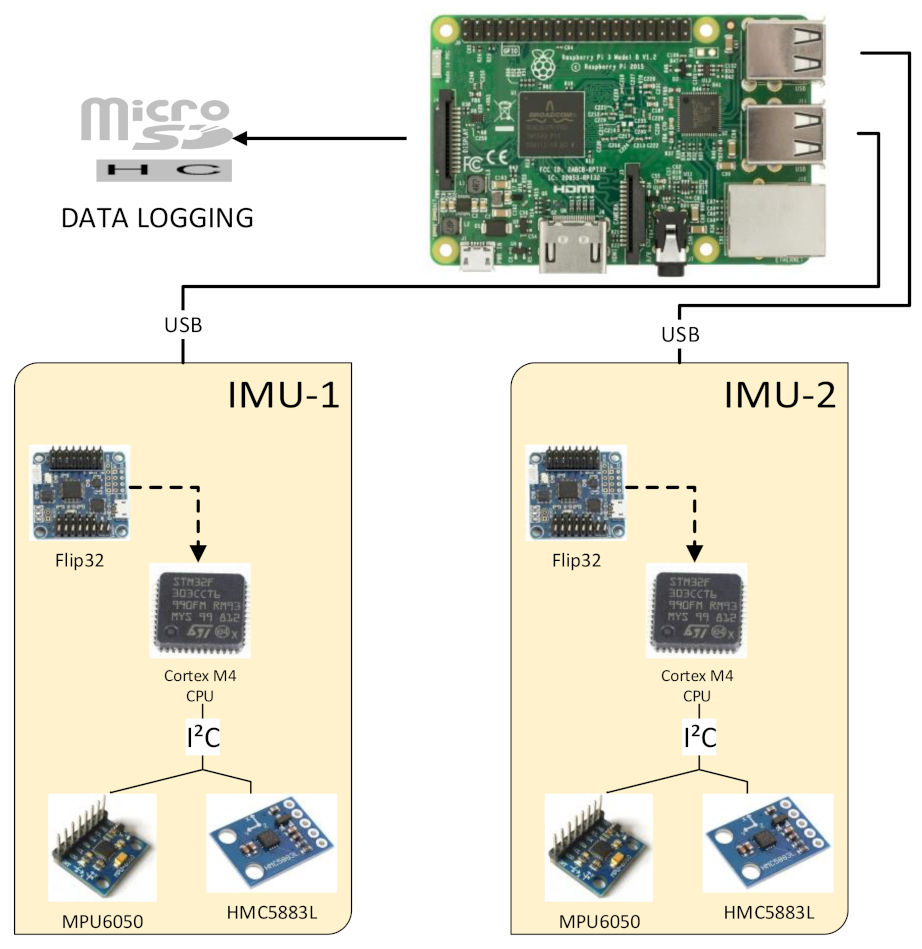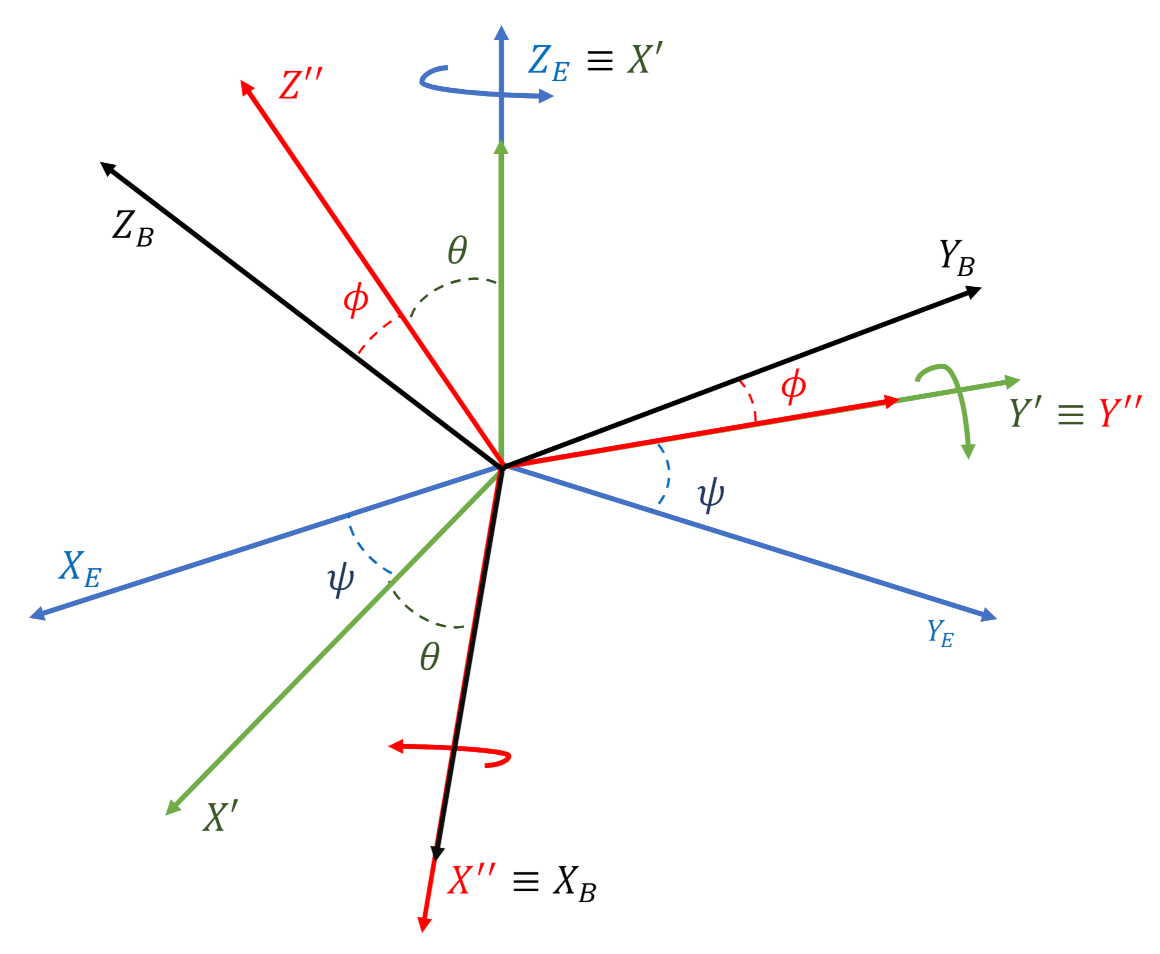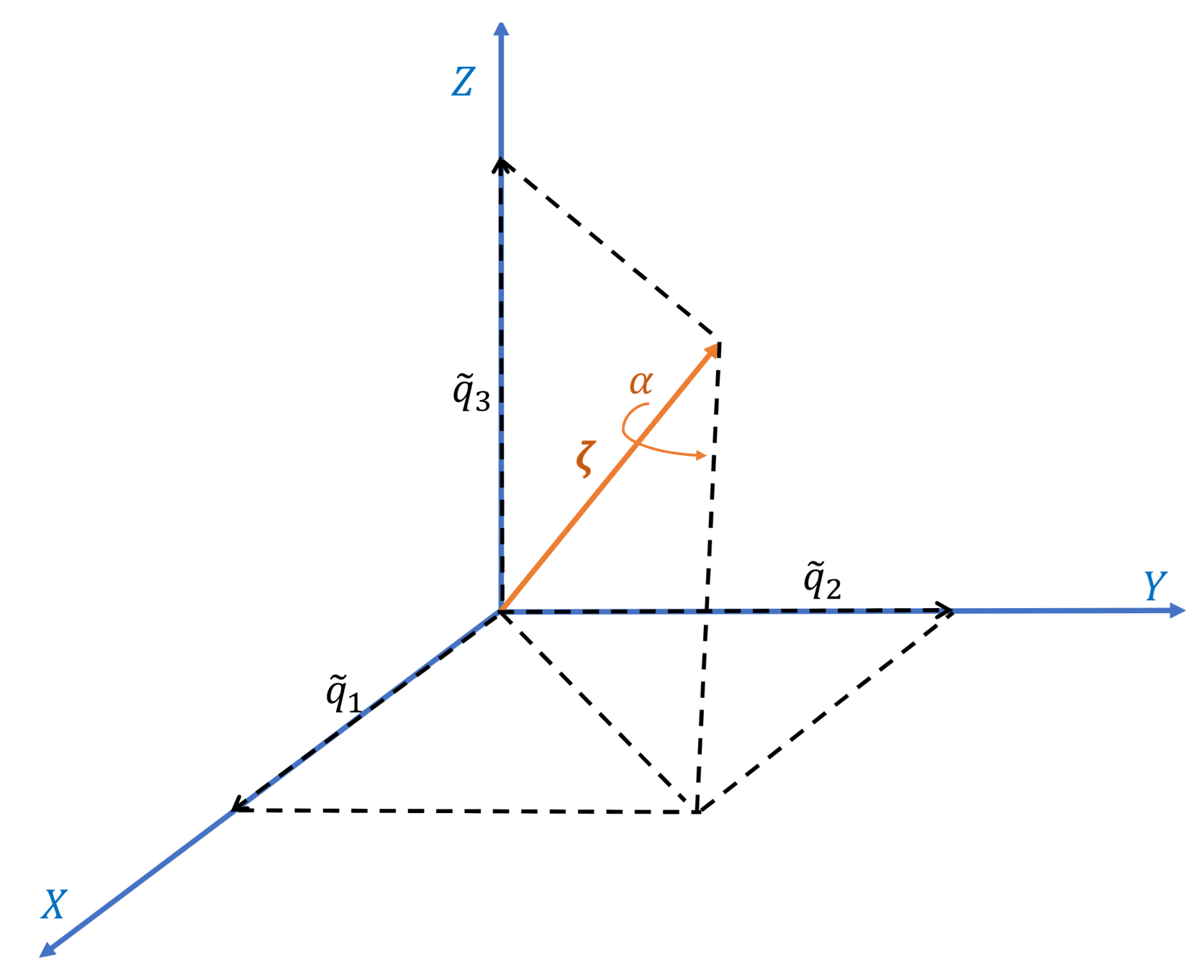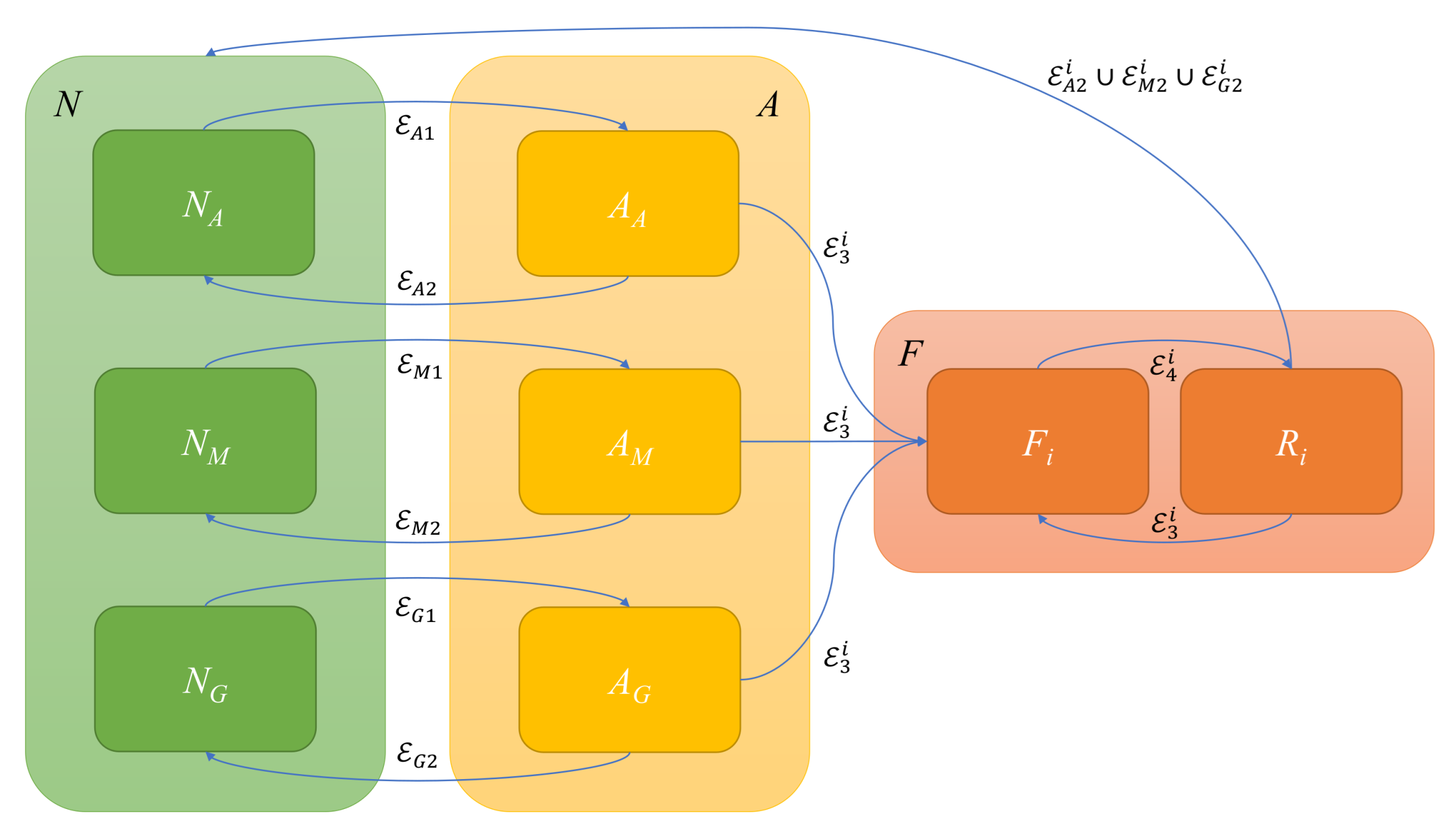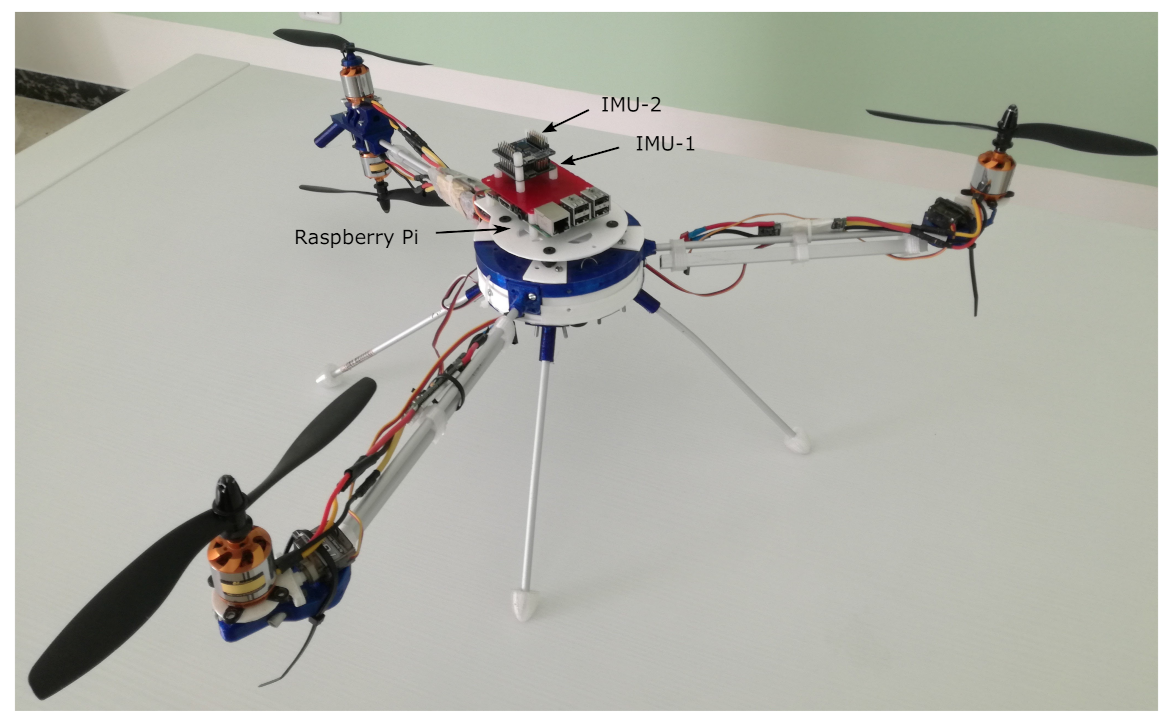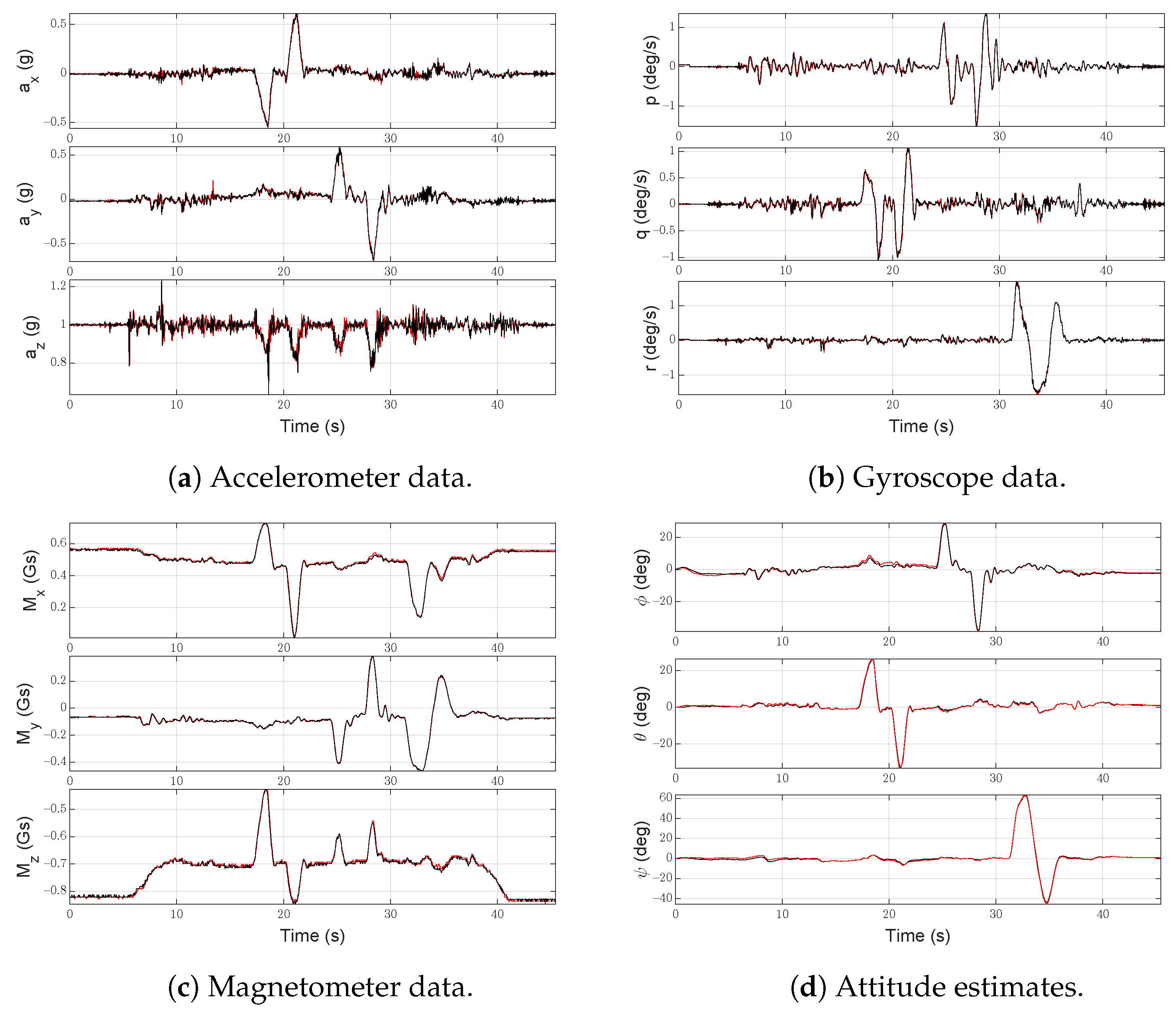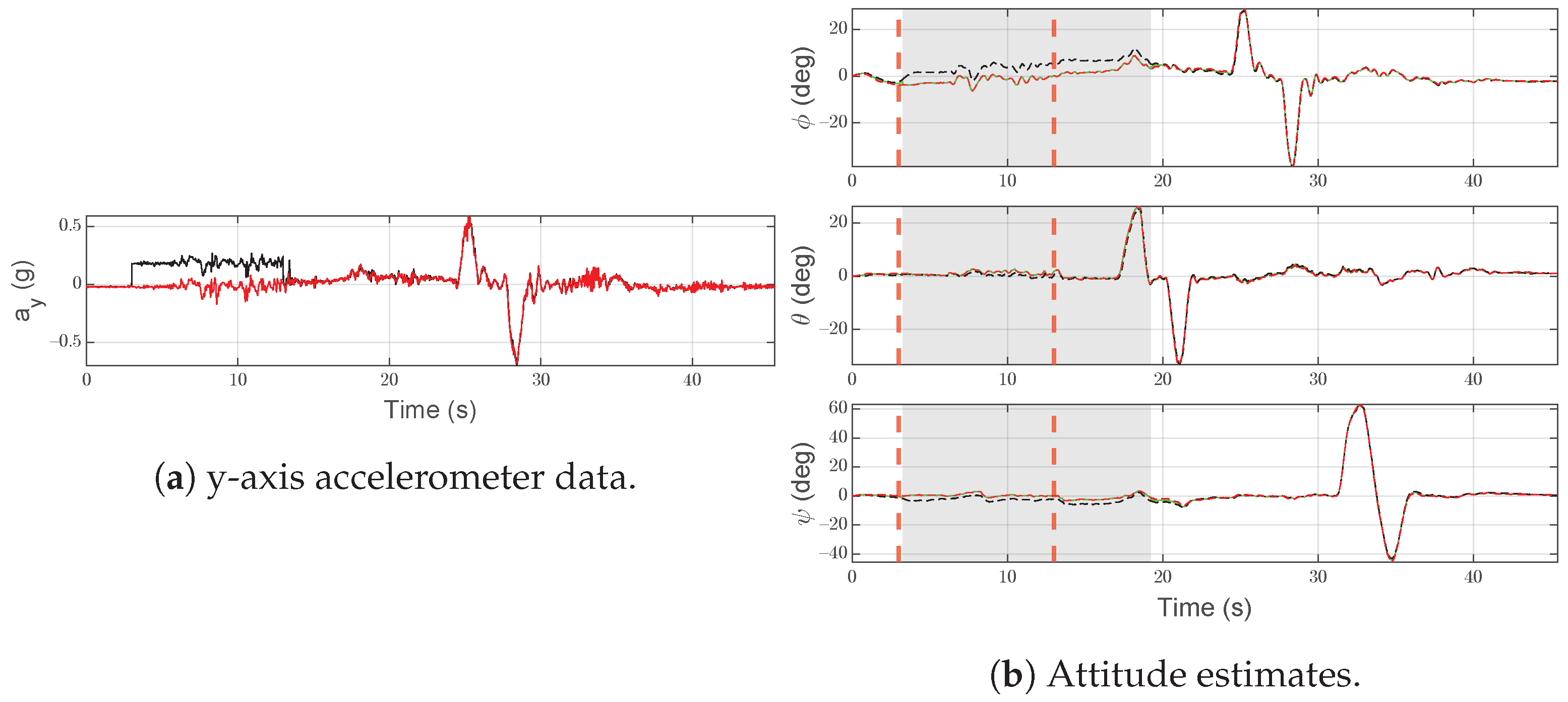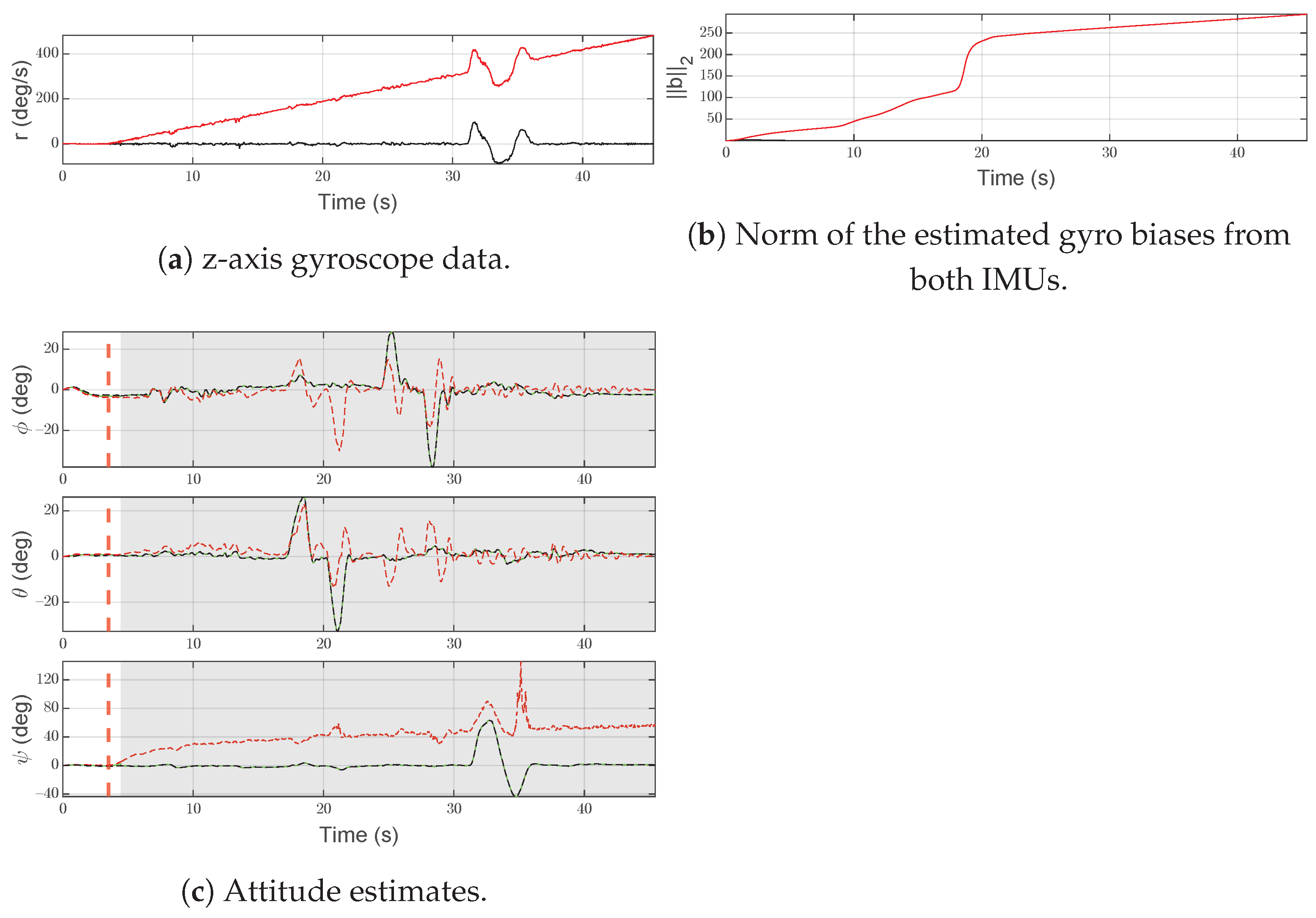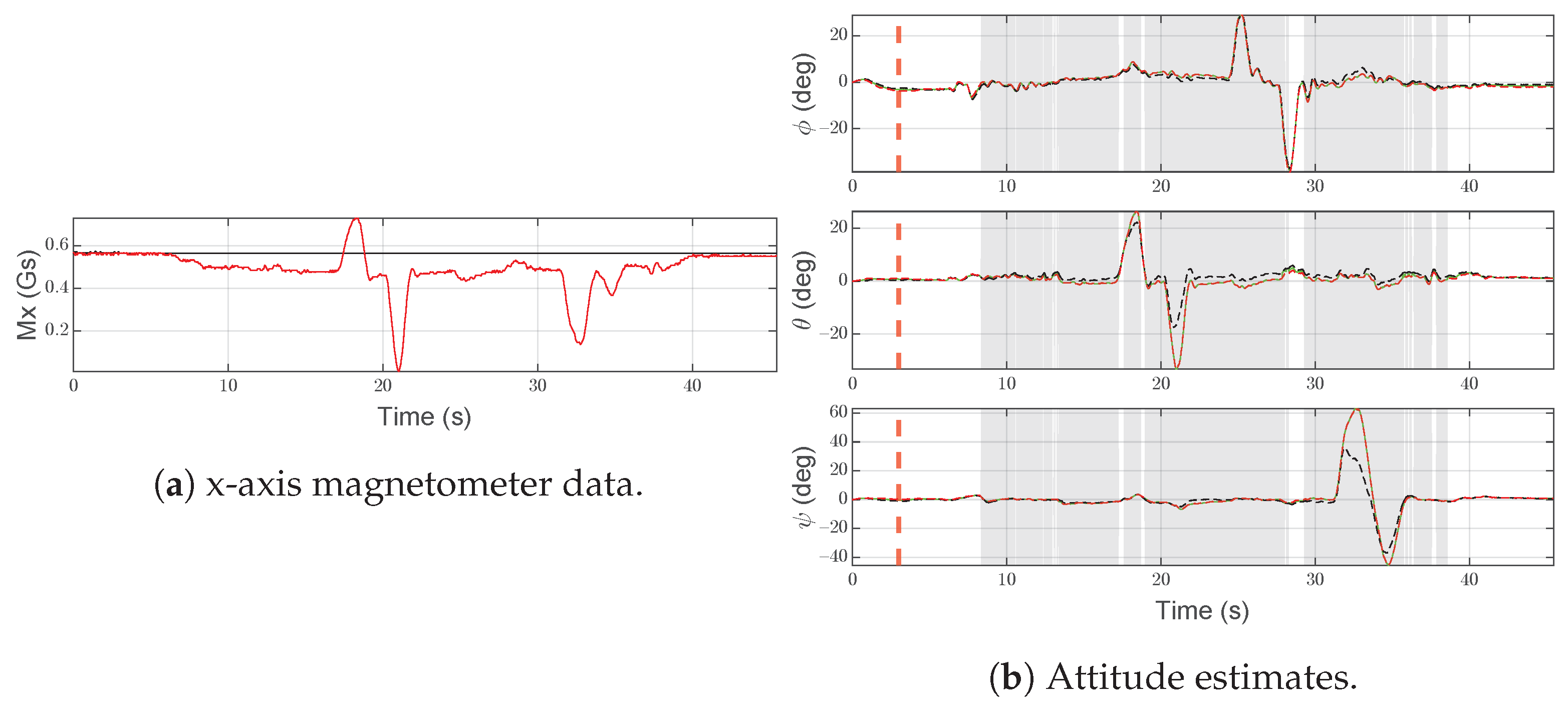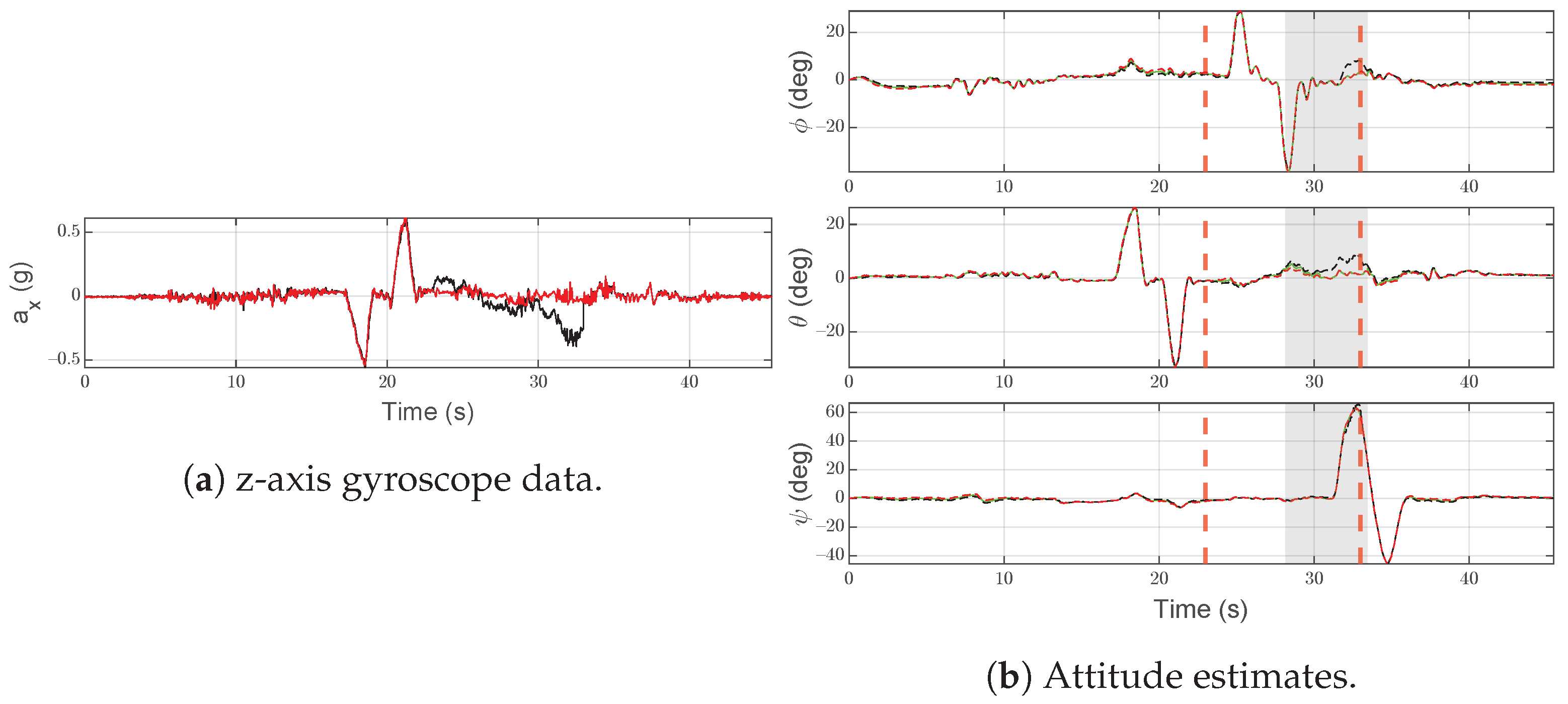1. Introduction
In recent years the use of unmanned aircraft has significantly increased, making the mitigation of risks due to on-board avionics malfunctions essential, in view of sustainable and safe aviation.
Several applications have been exploited with military and civil objectives [
1,
2], including search and rescue missions in hostile environments [
3], surveillance and security patrols [
4], home security [
5], precision agriculture [
4] and network coverage [
6], fields of application where UAVs play a key role in terms of reduction in operations and support costs [
4].
The
flight control system (FCS) is a key component of a generic UAV. It can include inertial sensors, air data systems, avionics, control surfaces/servos, servo-actuators, on-board software and other relevant subsystems contributing to UAV stability and control. A fault in such a system could be critical in the assessment of UAV reliability. It is worth noting that faults on FCSs account for 25% of U.S. military UAV incidents [
7].
An FDI system must be able to detect and properly isolate faults in order to mitigate the effects on UAV system performance and integrity. Four key features should be present in an FDI system:
For a modern aircraft, three kinds of fault can be considered:
sensor faults: a malfunction of the measurement subsystem;
actuator faults: a malfunction of actuators acting on system dynamics;
process faults: a strong change in system dynamics due to structural problems.
The most sophisticated UAVs are often equipped with technology solutions for automatically detecting and isolating faults on sensors, collectively labeled as
fault detection and isolation (FDI) systems [
8,
9,
10,
11,
12]. The presence of an FDI system increases the capability of UAVs to fulfill prescribed tasks even in the presence of faults. Quick detection and proper isolation of faults represents the first step of a reconfiguration strategy, required to minimize fault impact upon UAV performance [
9,
13]. In the literature, significant research efforts have been spent in terms of FDI solutions for UAVs. In [
14], FDI on UAV Pitot tubes and control surfaces is carried out by using statistical change detection, while in [
15], a state machine-based solution is proposed. Ref. [
16] shows a sensor fusion-approach for FDI on air data sensors and [
17] exploits self-tuning residual generators for fault detection on control surfaces. Finally, a cooperative FDI scheme for UAVs is proposed in [
18,
19] deals with the faults in UAV FDI systems.
In order to control UAV orientation with respect to an inertial reference system, one of the FCS tasks is attitude estimation. Usually, this consists of sensor fusion algorithms that use measurements coming from accelerometers, gyroscopes and magnetometers [
20]. Being an essential task, the problem of UAV attitude estimation on the basis of sensor measurements can be non-trivial [
21], and sensor fault detection must be considered to minimize risks due to loss of control.
In aerospace and several industrial applications, hardware redundancy-based techniques are the most common solutions to tackle faults on sensors. Such solutions require a set of redundant sensors to validate measurement data [
22]. A typical approach in commercial and military aircraft is based on triple or more hardware redundancies to enhance safety and reliability [
23]. Although hardware redundancy techniques are convenient solutions from the point of view of implementation and management, they bring several drawbacks such as weight, power consumption and costs, which are all relevant in small-size UAV applications.
In the literature, some effort has been spent trying to replace hardware redundancy-based techniques with analytical redundancy-based ones [
23,
24,
25,
26,
27,
28,
29,
30,
31,
32]. In [
25] a Kalman filtering approach is implemented in order to reveal oscillatory failures of redundant aircraft sensors, used for flight control law calculation. An FDI method that exploits set-valued observers is proposed in [
26] for uncertain linear parameter-varying systems. This method uses a bank of filters and it does not need thresholds to state a fault, in contrast with residual-based architectures. A fault-tolerant scheme for the sensors of a large civil aircraft is proposed in [
28,
29] using Kalman filters and sliding mode observers. Further nonlinear and robust techniques, such as
filtering, can reinforce robustness to faults of physically redundant schemes [
32,
33].
In recent years, some FDI solutions based on particle filters (PFs) are also proposed. A PF is a sequential Monte Carlo method (SMC)[
34] aimed at estimating the state of a dynamical system subject to random perturbations, via noisy output observations. A particle filter solution represents an attractive choice for UAV attitude estimation problems [
20,
35,
36,
37,
38,
39] outperforming classical Kalman filter (KF)-based approaches [
40] at the price of significant computational complexity growth [
20]. A PF-based fault detection scheme is proposed by [
41], while [
42] highlights PF advantages in tackling FDI for non-linear systems and [
43] also discusses PF drawbacks. In [
44] a particle filter deals with the FDI problem for the autonomous integrity monitoring of a GPS receiver. Ref. [
45] proposes two different PF-based FDI architectures, which are compared with more classical KF-based approaches. In [
46] a particle filter solution is used to deal with both known and unknown faults for a complex system, focusing on a wheeled mobile robot, and in [
47] a PF replaces principal component analysis in driving a Gaussian Mixture Model for process monitoring FDI. In [
48] a general PF-based FDI scheme is proposed. Similarly [
49] is focused upon tackling some of the most well-known PF problems.
In commercial unmanned aviation, costs are a key objective to ensure that UAVs become widespread and, in specific operations, risk assessment needs proof that the flight risk can be acceptable.
In such direction, this paper is focused on the implementation of a sensor fault detection and isolation technique on low-cost hardware, typical of commercial micro- and mini-UAVs. The scope of the proposed procedure is to detect and isolate faults on inertial measurement units used to estimate UAV attitude. The considered hardware is based on a duplex architecture with two inertial measurement units (IMUs) including 3-axis gyroscopes, accelerometers and magnetometers. The estimation problem is dealt with by the design of a particle-filter-based sensor fusion algorithm. From a theoretical point of view, a PF could be a realistic option when statistical performance is considered [
50,
51,
52], because it is able to deal with non-linear motion models and non-Gaussian noise distributions.
Although the use of a PF approach [
20] can increase the computational burden, the paper shows promising results by using an SFDI procedure based on two parallel PFs.
The effectiveness of the proposed procedure to detect and isolate IMU sensor faults is proved by means of numerical simulations conducted on a Raspberry Pi board using real data gathered during the flight of a tri-rotor aircraft. Furthermore, this work proposes a sensitivity analysis involving main algorithm parameter variations to estimate effects in terms of SFDI performance. The computation time on a low-cost and low-power embedded platform is assessed in order to prove the algorithm’s applicability in a real-world scenario.
The paper is organized as follows:
in
Section 2, the proposed hardware and software architecture are described;
in
Section 3, the attitude estimation model is defined, using quaternion-based relations;
in
Section 4, the particle filter algorithm is introduced;
in
Section 5, the SFDI algorithm is shown with details on the implementation;
the effectiveness of the algorithm is shown by means of realistic simulations in
Section 6, where an analysis against tunable parameters is discussed.
2. System Description
The proposed hardware architecture is composed of the following components:
two commercially available boards based on the STM32F103VCT CPU by ST, typically used on low-cost multi-rotors as flight controllers; such boards, called IMU-1 and IMU-2, weighing 17 grams, have a power consumption average below 1W and include the following inertial sensors:
- -
an MPU6050-based MEMS triaxial accelerometer and gyroscope (see specifications in
Table 1);
- -
an HMC5883L-based MEMS magnetometer (see specifications in
Table 1);
a Raspberry Pi 3B platform, a single-board computer based on the Broadcom BCM2837 64bit CPU, with wireless LAN, USB and GPIO connectivity. It weighs 42 grams and in our test had a power consumption of less than 2.5W.
IMU-1 and IMU-2 are linked to the Raspberry Pi platform by USB ports through an on-board serial to USB chip. This configuration simplified the prototyping while ensuring a high bandwidth for data transmission.
Figure 1 summarizes the structure of the experimental setup.
IMUs act as data collectors. The on-board software acquires signals from sensors on the IC port at a frequency of 100 Hz and sends them through a serial connection.
The SFDI algorithm, together with particle filtering, was implemented on the Raspberry Pi 3B platform as a real-time task over a Debian-based operating system with a fully preemptive GNU/Linux 4.14 kernel. It was coded using MATLAB R2019b by Mathworks and was made executable on the embedded hardware by using code generation. The produced C code was properly modified to customize peripherals access and recompiled on the board. During our tests, the SFDI executable had the highest execution priority to minimize any jitter due to the operating system.
The goal of the SFDI algorithm is to monitor the health of each IMU and to supervise the overall system by providing reliable data to the flight control system. In standard conditions, the output of the SFDI algorithm is the average attitude estimated using both IMUs, while, when a fault is detected, the procedure provides as outputs only the orientation computed by the operational IMU.
3. UAV Attitude Estimation Problem
Vehicle attitude is defined as its orientation with respect to a reference frame and its accurate estimation is an important topic in the robotics and aerospace fields. UAV attitude is obtained by using a sensor fusion algorithm, together with data provided by IMU sensors.
The attitude obtained by integrating gyro measurements in terms of angular velocities is affected by non-negligible issues, due to bias and random-walk errors. On the other hand, accelerometers and magnetometers provide a good estimate only in static or quasi-static conditions, in the absence of any constant acceleration and magnetic field changes. In order to mitigate such problems, different sensor data fusion algorithms can be implemented on-board [
53,
54]. Most UAV attitude estimation algorithms are based on an extended Kalman filter [
20,
55,
56,
57], unscented Kalman filter [
58,
59], particle filtering [
36,
51,
60], quaternion estimation (QUEST) algorithms [
61,
62], complementary filter [
63,
64] and Madgwick filter [
65].
To describe the attitude estimation problem, two reference systems must be defined:
a north-east-down (NED) reference frame, parallel to the Earth’s surface, with the -axis pointed toward north, the -axis pointed toward east and the -axis oriented downwards;
the body frame, centered in the UAV’s center of gravity (), with the -axis pointed toward the UAV nose, the -axis downward and the -axis oriented to complete a right-handed system.
Since UAV navigation is done in a bounded space, the NED frame can be centered in the UAV departing point and assumed as an inertial reference system.
Transition from the inertial to the body frame is obtained with a sequence of three ordered rotations, denoted as
[
66] (see
Figure 2):
the first rotation around the axis by the yaw angle , from to ;
the second rotation around the axis by the pitch angle from to ;
the third rotation around the axis by the roll angle from to .
The angles , and are called Euler angles and describe the aircraft’s attitude, i.e., the orientation of the body frame with respect to the inertial NED frame.
Alternatively, to define the relative rotation of the body frame with respect to the inertial frame, a quaternion-based representation can be used [
67]. From Euler’s theorem, any rotation sequence is equivalent to a single rotation by a given angle
about a fixed axis passing through the origin. This rotation can be described by the unit quaternion vector
, whose components define the axis vector
and the angle
(see
Figure 3):
Let us call
the unit quaternion vector associated to
from the NED reference frame to the body frame:
Euler angle-based representation and quaternion-based representation are equivalent; therefore, a one-to-one correspondence between Euler angles and the quaternion vector exists:
The Euler angles are computed as follows [
66]:
In the absence of noise and uncertainties in IMU measurements, the UAV attitude estimation could be carried out by integrating the angular speed vector
from a known initial attitude. Consequently, the quaternion vector exhibits the following dynamics:
where the matrix
is
However, the gyroscope output is an angular velocity affected by white noise. In static conditions, in the absence of rotations, the gyroscope output is not zero as expected, but it is a white noise with a zero mean and a given standard deviation. On a finite time horizon, the integration will lead to a drifting of the angle estimation [
68,
69].
The sensed rotational velocities
can be assumed different from
due to the presence of bias and stochastic noise:
and
represent the vectors of biases and unknown zero-mean noise affecting gyroscopes, respectively.
In steady-state and slowly varying conditions, a good solution is to involve accelerometers and magnetometers, being dependent on the UAV orientation. The relationship between UAV orientation and accelerometer and magnetometer output vectors
and
is defined as follows:
where
is the gravity vector with
m/s
and
is the Earth’s magnetic field, both defined in the Earth frame.
However, although an optimization-based procedure can be used to solve Equations (
9) and (
10), the last approach is not reliable [
67,
70], due to the presence of non-negligible noise in measurements.
In order to exploit (
9) and (
10), consider the sensed accelerations and field magnetic measurements:
with
and
vectors of sensor noise affecting triaxial accelerometers and magnetometers at the time instant
t, respectively.
The attitude estimation can be carried out by merging both approaches [
20,
71]. The kinematic model (
6) is usually extended with additional dynamics in order to take into account the gyroscope biases [
72]:
where
is a time constant compliant with bias dynamics. To correct the previous estimation, (
15) and (
16) can be used:
Equations (
13)–(
16) can be expressed in the following generic form:
where
is the state vector,
is the output vector and
is the noise vector.
In such representation, accelerometers and magnetometers provide output sensor measurements according to (
18), whereas gyroscopes represent an external input acting on (
17).
The attitude estimation problem can be reformulated as the estimation of the state vector
from (
17) based on output measurements (
18). Corrective actions can then be designed and implemented, feeding back the error between measured and estimated outputs. Optimal estimation has the role of reducing sensitivity to noise and forcing the additional state vector components
to compensate for gyro biases or other low-frequency uncertain contributions.
4. Particle Filter Algorithm
Let us assume the following generic discrete time representation:
being
,
,
,
and
. It can be obtained by applying Euler’s discretization to (
17) and (
18) where
,
,
,
and
and
the
th sampling time instant
with
the constant sampling time.
Equations (
19) and (
20) represent a partially observed Markov process, where the output vector
is observable, while the state
is unobservable. A Markov process is a stochastic process whose state vector
depends only on
, being independent of
, with
.
A particle filter is used to estimate
in (
19), fulfilling (
20) under the hypothesis that the process
and the measurement noise
are unknown.
The particle filter is a numeric implementation of a Bayesian estimator [
73]. The Bayesian approaches are based on Bayes’ rule. Their goal is to estimate the conditional probability density function (PDF) of the current state
, given the whole set of acquired measurements at time
k, denoted by
. The conditional PDF is denoted as
.
The Bayesian estimator can be formulated in a recursive way, in order to update the PDF when a new measurement is acquired [
74].
At the first time step
, since no measurements are available, e.g., the set
, the estimator is initialized as follows:
where
is the known initial PDF of state.
At each time step
k, the a priori PDF denoted by
is computed using the Chapman–Kolmogorov formula [
73]:
In the a posteriori phase, the conditional PDF is computed by using Bayes’ rule as follows:
where
is available thanks to measurement equations and the PDF of the measurement noise
.
The PDF
depends on the a priori PDF
and
:
Equations (
23)–(
25) involve intractable multidimensional integrals [
34]. The particle filtering approach offers a numerical solution to this problem [
75].
In PF algorithms, PDF
can be approximated by a set of random samples named
particles. According to [
76], the convergence rate of the particle-approximated cumulative function is
, with
a constant tunable parameter indicating the number of particles.
An important feature that characterizes particle filter algorithms is the method used to obtain new samples. A widely used class of resampling techniques is
sequence importance resampling (SIR) [
77].
Let us assume discrete-time model (
19) and (
20). A particle filter is used to estimate the
value knowing the vector
of accelerometer and magnetometer measurements and the vector
of the rotational speed sensed by the gyroscopes.
Assuming that the PDF of the initial state is known, the PF algorithm is initialized randomly generating particles , on the basis of PDF . Then, at each time step k, the procedure involves the following steps:
- (i)
the set of a priori particles
at the
k-th sampling step is obtained by propagating the set
with the state Equation (
19), considering the process noise
equal to zero. Therefore, the generic particle
is computed as follows:
being
with
.
- (ii)
We compute the relative likelihood
of each particle
conditioned on the measurement
., i.e., evaluate the PDF
on the basis of the nonlinear measurement equation and the PDF of the measurement noise
. Under the assumption of additive measurement noise, the weight
can be computed as follows:
where
denotes the probability and
is obtained according to the output equation, neglecting the measurement noise
:
- (iii)
The weights
are normalized according to the following equation:
- (iv)
A set of particles taking into account a posteriori knowledge
is obtained by randomly drawing
samples from
therefore, each particle
is chosen
times. The integer number
must satisfy the following conditions:
To compute the parameter the following sub-procedure is applied:
- (a)
define a series of
thresholds
as:
- (b)
initialize values to zero;
- (c)
draw uniformly distributed random numbers from the interval , ;
- (d)
for each , find such that , then .
- (v)
In order to counteract the so-called
particle degeneracy problem, which can weaken algorithm convergence and robustness [
78], the set of a posteriori particle
is obtained by randomly scattering each particle of set
in a given neighborhood.
- (vi)
The state estimate
is evaluated as the algebraic mean of a posteriori particles belonging to
:
In
Section 6.2 a sensitivity analysis against introduced tunable parameters
and
is proposed.
5. SFDI Algorithm for a Duplex IMU
In the view of accomplishing navigation purposes, let us consider an onboard flight controller based on a
duplex sensor architecture including two IMUs, named IMU-1 and IMU-2, with triaxial accelerometers, gyroscopes and magnetometers, whose output sensor measurements
and
are defined as follows:
where
,
are the outputs of the
i-th triaxial accelerometer and magnetometer at the time instant
k.
According to (
8), the gyroscope measurements
are used as the input of the kinematic model at the time instant
k.
For each IMU i, the quaternion vector and gyroscope biases are estimated by using a particle filter, named PFi, fed with and .
A sensor reconfiguration logic has been implemented to achieve FDIR, formulated as an
event-driven state machine, based on the following sets of logical states:
where
subscript A indicates accelerometers, subscript G is for gyroscopes and subscript M is for magnetometers;
is the normal state for sensor ;
is the alert state activated at the detection phase on the basis of a preliminary comparison between IMUs;
is the fault state for the IMU unit .
In
Figure 4, the state transition graph is shown. The events driving the state transition of the proposed state machine can be grouped into three algorithm steps:
Step 1—FAULT DETECTION. Under the assumption of a non-contemporary fault, at each time step
k, the transition from normal
to alert
state (and vice versa from
to
) is achieved by comparing measurement accelerometer, magnetometer and gyroscope measurements from IMUs.
where
,
and
are the
l-th components of accelerometer, magnetometer and gyroscope measurements, respectively.
,
and
are positive scalar thresholds for accelerometers, magnetometers and gyroscopes, required to make the detection robust against sensor noise and uncertainties.
Step 2—FAULT ISOLATION. Once the presence of a fault is detected, with
the time instant of fault detection, then
As for the transition from the alert to the faulted state, a fault on the
i-th IMU is declared if the following condition holds:
where
denotes the infinity norm and
is a diagonal weighing matrix required to take into account the effects of sensor noise. The faulted IMU
can be isolated solving the following problem:
The residual
represents the error between output estimation and measurements, increased with the difference between the estimated biases at the current time and at the detection time:
where
indicates the Euclidean norm.
According to (
42), a faulted sensor belongs to the IMU whose output is farther from the relevant full particle filter forecast.
Step 3—FAULT RECOVERY. When the fault condition is no longer held (
), the system is able to recover the faulted IMU by checking the consistency between attitude estimations from both
PFs, through
In
Section 6.2 a sensitivity analysis against introduced tunable parameters
,
,
and
is proposed.
7. Conclusions
In commercial unmanned aviation, an increase in the system reliability is needed in order to make flight risks acceptable.
With this aim, in this paper, the implementation of a sensor fault detection and isolation technique on low-cost hardware typical of commercial micro- and mini-UAVs was performed. Given the crucial role of attitude estimation in flying platform stabilization, the proposed procedure is aimed at detecting and isolating faults on inertial measurement units used to estimate UAV attitude. The hardware is based on a duplex architecture with two inertial measurement units (IMUs) including 3-axis gyroscopes, accelerometers and magnetometers. A particle filtering approach is proposed to deal with the attitude estimation problem, being able to deal with non-linear motion models and non-Gaussian noise distributions.
Results show the effectiveness of such an approach. Data gathered from a real flight of a tri-rotor flying platform were useful to test the SFDI algorithm with real sensor disturbances due to vibrations and changes to magnetic field. The proposed algorithm correctly detected every injected fault, including for challenging scenarios such as freezing faults and slow drifts.
The proposed architecture increases system reliability by doubling the number of on-board sensors. This produces a reduction in weight, costs and power consumption, in comparison to the gold standard of triplex architecture for avionics at the price of lower speed and accuracy.
In the literature, few duplex IMU architectures have been proposed. In
Table 8, the authors compared the proposed SFDI algorithm with the SFDI logic presented in a previous work [
72], to highlight the pros and cons of the current solution by comparing platforms in terms of detection time (
) and maximum attitude error (
).
The implementation of the algorithm on a Raspberry Pi low-cost embedded platform with two IMU boards has shown that, although a particle filter is considered a heavy algorithm, the proposed procedure can be used on low-cost unmanned aircraft, with an increase in system reliability and without a significant change in the overall cost.
To make the algorithm readily available and easily tunable, a sensitivity analysis of algorithm parameters on the SFDI performance was conducted, highlighting the chosen settings.
For the latest low-cost drones equipped with sonar, lidar and optical flow sensors, the future applications of our procedure are currently under research, using more sensors and also validating duplex heterogeneous architectures, where redundant sensor platforms can contain different sensors.
